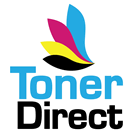Today's printer ink is made of what is called carbon black, a pigment which is actually similar to the soot that was used in ancient times. The composition also includes a binder, a solvent, and a plethora of additives, such as chelating and drying agents. Ink recipes vary a bit depending on the company that produces it (HP, Epson, Canon) and the surface that the printing will be conducted upon, as well as the printing method used.
Pigments
The chief function of the pigment is to provide color to the ink. Pigments can also bring abrasiveness or gloss to a surface, or provide it with a chemical resistance to heat, light, and solvents. They are a vital part of how printer ink is made.
Base pigments are mixed with other chemicals known as opacifiers and extenders. Opacifiers are white and cause the ink to become opaque, covering a given surface, while extenders are clear and make base pigments appear less intense. All pigment is ground up to prevent clumping and to allow it to spread evenly throughout the ink.
Dispersants
Dispersants are added to allow the ink to flow well, so it can easily be transferred to a surface during printing. They stabilize the particles of pigment by lowering the mechanical energy necessary for grinding. Surfactants and polymers are the classes of compounds used for this endeavor, and they are suspended in a solvent. Each absorbs pigment particles and forms a coating that can vary in thickness and composition to prevent the fine pigment particles from settling. The different sizes of pigment particles influence the intensity of a given color.
Resins
Resins are added to ink to allow it to bind together into a distinct film, as well as to bind it to a printed surface. These materials improve not only binding, but also the rheology and mechanical properties of the ink. Resins, such as alkyds, ketones, acrylics, and formaldehydes, are also used in printing to create surfaces that are glossy, or heat, water, and chemical resistant. You will usually find multiple resins in any given ink.
Other Notable Ingredients
There are many other ingredients of importance that are added to what printer ink is made of to improve its function including:
What is the Base Composition of Ink?
Most printer ink is made of what is a base of linseed or soybean oil, or a heavy petroleum distillate used as the solvent. This is then combined with pigments to create ink that is designed to dry by evaporation. This base is often referred to as varnish.
Black Ink
Black ink is created through a combination of carbon black and varnish.
Color Printing Ink
Color pigments are composed of salts and multiring nitrogen-containing compounds, or dyes including:
Though not as common, inorganic pigments are also used. These include chrome green (Cr2O3), prussian blue (Fe4[Fe(CN)6]3), cadmium yellow (CdS), and molybdate orange (a mix of molybdate, sulfate, and lead chromate).
White pigments, such as titanium dioxide, can be used alone or to modify the characteristics of particular colored inks. These pigments are mixed with varnish to formulate color printing ink.
Symone Sutherland-MacLeod left the following comment: "thanks - very helpful & efficient"
Jan left the following comment: "Excellent customer service and prices."
Jai Ghazizada left the following comment: "Rose was fantastic! Thank you
Sue left the following comment: made it easy to find what I wanted details on.... thanks
-----------------
Sean left the following comment: Rose Anne was great to deal with.
-----------------
Toner Direct
PO Box 301-065
Albany
Auckland 0752
"Returns are not Accepted to the PO Box"
Be sure to obtain an RA Number.
Freephone: 0800 855 966
E-Mail: info@tonerdirect.co.nz

